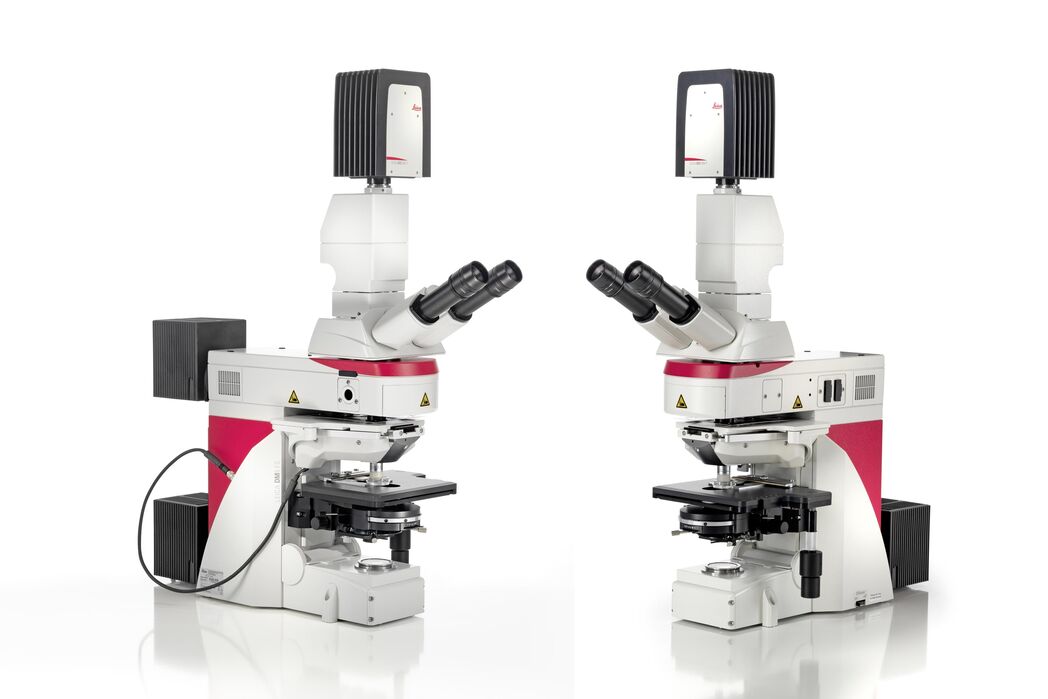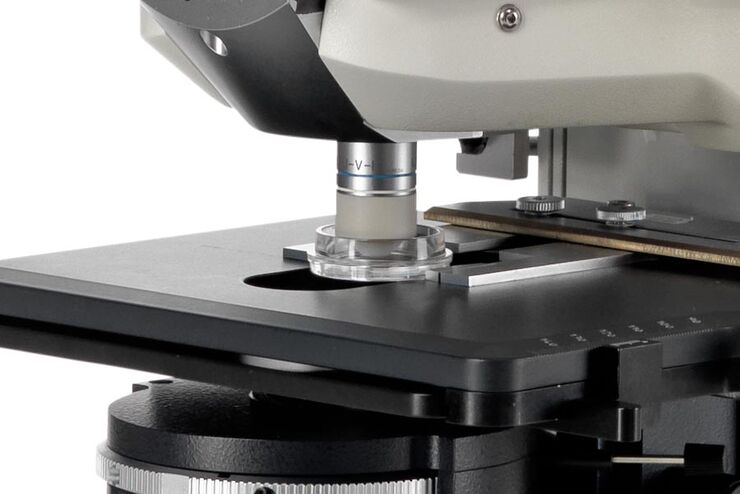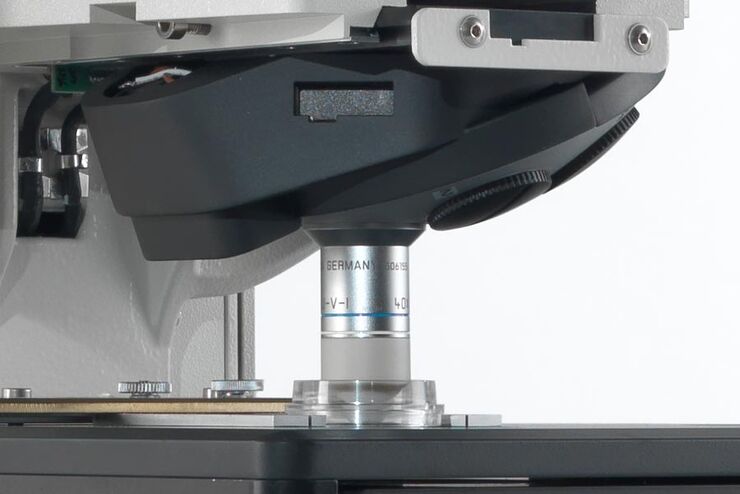DM6 FS Fixed Stage Fluorescence Microscope
High Stability
Do you work in a field such as electrophysiology, evolutionary biology, or neuroscience where outstanding stability is required for successful experiments? The Leica DM6 FS fixed stage fluorescence microscope is a suitable instrument for your present and future challenges.
- Perform your experiment with a high degree of mechanical and electronic stability
- Save time using the microscope’s full range of automated functions
- Efficiently work with tools and accessories using special Leica optics that provide ample clearance around the specimen
- Add special techniques based on the Leica DM6 FS for Optogenetics and Cryo CLEM

Key Features
Stabilize Your Experiments
Electrophysiological experiments are highly susceptible to external vibration and other interference. Any manipulation of a specimen can disrupt the axonal connections within the tissue slice or the acquired patch-clamp configuration.
The electronic design of the Leica DM6 FS stabilizes your experiments:
- Control the full system without touching the stand
- All motors and current-carrying elements are switched off if not in use
The compact design of the instrument makes it mechanically stable as well, and creates space for accessories to be used on the microscope’s stage.
Vibration-free Operation
Operate the microscope smoothly using the remote control. The motorized objective changer prevents disruption of your sample by swapping two objectives in a vibration-free manner.
- Switch magnification without touching the microscope
- Change objectives or gently immerse an objective into the buffer solution
Ample Clearance
Choose from a range of special objectives featuring extra-long free working distance, a large access angle, and an inert ceramic front with minimal electric and thermal conductivity for electrophysiology.
- Use the Leica HC FLUOTAR L 25x/0.95 W VISIR objective from our series of high-end objectives especially designed for near-infrared DIC
- Open the visual field for good clearance around the specimen with an access angle of 41°and a large free working distance of 2.5 mm
- Penetrate into thick tissue (2,5 mm with high contrast and high resolution using Wollaston prisms for Differential Interference Contrast (DIC).
Easily Customize Your Set-Up
Configure your objectives in three different ways and combine all of these with three different motorized magnification changers.
- On a 6-position motorized nosepiece
- On a 2-position motorized objective changer
- On a single objective holder
You can switch optically between magnifications during an experiment without changing the objective at all by combining a magnification changer with low magnification – high numerical aperture objectives.




